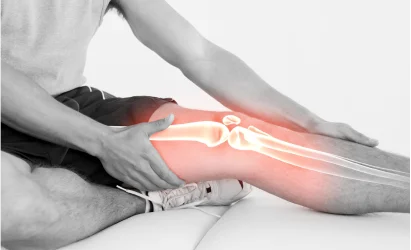
The Importance of Early Intervention for Musculoskeletal Disorders
Musculoskeletal disorders (MSDs) are conditions that affect the muscles, bones, joints, tendons, and ligaments. They can range from common issues like back pain and arthritis to more severe conditions such as fractures and tendon injuries. While these disorders are prevalent and affect millions of people each year, many individuals delay seeking treatment, thinking the pain will subside on its own. However, early intervention is a critical component in managing musculoskeletal disorders effectively and preventing long-term damage. This blog will explore the importance of addressing musculoskeletal issues early on and how it can lead to better health outcomes.
Why Early Intervention Matters
The primary benefit of early intervention for musculoskeletal disorders is the prevention of further damage. Musculoskeletal injuries and conditions often worsen over time if left untreated. For example, a mild sprain or strain can develop into a chronic issue, leading to persistent pain and mobility limitations. When an individual seeks early treatment, the issue can be addressed before it progresses to a more severe or disabling condition.
Moreover, early intervention can help reduce the overall treatment time and cost. The longer a musculoskeletal disorder goes untreated, the more complicated and costly the treatment may become. By addressing the condition in its early stages, the need for expensive surgeries or prolonged rehabilitation can often be avoided, leading to quicker recovery and fewer medical expenses.
Common Musculoskeletal Disorders and the Importance of Early Care
1. Back and Neck Pain
Back and neck pain are two of the most common musculoskeletal complaints. Left untreated, these issues can lead to chronic pain, decreased mobility, and even disability. Early intervention in the form of physical therapy, posture correction, or pain management strategies can significantly reduce the risk of long-term issues and allow individuals to return to their regular activities more quickly.
2. Arthritis
Arthritis, particularly osteoarthritis, can be debilitating if not managed early. The condition leads to the wear and tear of joints, which causes pain and inflammation. If addressed early, the progression of arthritis can be slowed through medication, exercise, and lifestyle changes. In some cases, surgery may be avoided by taking early preventative measures to manage the disease.
3. Sports Injuries
Sports injuries, ranging from sprains and strains to more severe ligament and tendon damage, are common among athletes. If left untreated, sports injuries can lead to long-term dysfunction, chronic pain, and even permanent damage. Early intervention, such as rest, ice, compression, and elevation (R.I.C.E.), along with physical therapy, can promote faster healing and a quicker return to sports activities, reducing the risk of recurring injuries.
4. Repetitive Strain Injuries (RSI)
Repetitive strain injuries, like carpal tunnel syndrome, tendinitis, and bursitis, are caused by repetitive motions or overuse of muscles and joints. Early intervention, such as rest, ergonomic adjustments, and physical therapy, can help alleviate symptoms before the injury becomes chronic and requires surgical intervention.
How Early Intervention Works
Early intervention typically begins with a comprehensive evaluation of the musculoskeletal disorder by a medical professional, such as an orthopedic specialist or physical therapist. Diagnostic tools, such as X-rays, MRIs, or ultrasound imaging, may be used to determine the extent of the injury or condition. Based on the findings, a personalized treatment plan is developed, which may include:
• Physical Therapy
Targeted exercises to improve strength, flexibility, and range of motion.
• Medications
Anti-inflammatory drugs, pain relievers, or injections to reduce pain and inflammation.
• Lifestyle Modifications
Changes in posture, ergonomics, and activity levels to prevent further strain.
• Surgical intervention
In some cases, early intervention may involve minimally invasive procedures to correct the problem before it worsens.
By taking an active role in early treatment, patients can avoid the need for invasive surgeries and long-term rehabilitation, ensuring a faster recovery and improved quality of life.
Benefits of Early Intervention for Musculoskeletal Disorders
1. Prevention of Chronic Pain
Early treatment prevents conditions from becoming chronic, reducing the risk of ongoing pain and discomfort.
2. Improved Mobility
Treating musculoskeletal disorders early can help maintain or restore mobility, allowing individuals to continue daily activities without restrictions.
3. Reduced Risk of Complications
Addressing injuries early on reduces the risk of complications, such as joint instability, loss of function, and permanent damage
4. Quicker Recovery:
The sooner treatment begins, the quicker the recovery process, allowing patients to return to their normal routines faster.
Conclusion
The importance of early intervention for musculoskeletal disorders cannot be overstated. By addressing issues early on, individuals can prevent long-term damage, reduce pain, and improve overall mobility. Early treatment not only leads to better health outcomes but also reduces the need for costly and invasive procedures. If you experience any musculoskeletal pain or discomfort, it’s crucial to seek professional care as soon as possible. Remember, the sooner you seek help, the sooner you can return to a pain-free, active lifestyle. Don’t wait for the condition to worsen—early intervention is the key to better health and recovery.



